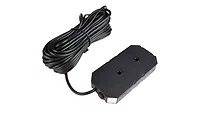New Water Sensor Technology Detects Contaminants in Seconds
Testing residential wells can be an expensive and time consuming process, particularly when trying to detect E. coli bacteria and heavy metals like lead, mercury and arsenic, according to Junhong Chen, professor of mechanical engineering at the University of Wisconsin-Milwaukee. He says the typical method for detecting E. coli involves collecting a sample and reading it by growing the bacteria under the appropriate conditions. “This process typically takes 10 to 24 hours, or even longer. … So it’s super slow,” he says.
Since around 2008, Chen has led the development of a sensor technology made up of a layer of carbon sheet called graphene. Thanks to his efforts, it’s now possible to effectively detect E. coli and heavy metals in water within a much shorter time frame. “Our method can detect the presence of bacteria in seconds, so that’s a breakthrough,” Chen says.
For water well drillers who put a lot of time into testing groundwater for safety, the technology is great news. “This would allow them to at least read the results really quickly,” Chen says. “They don’t have to wait. That improves their efficiency.”
According to Chen, while there are technologies in existence that can test heavy metals as fast as his creation, they are not as conducive and can’t be used for continuous monitoring. “Once the well is constructed, if the customers would like to monitor the quality of the water over time, continuously, so that there’s an early warning if there’s something going on, it helps the users. That’s something that cannot be done now, but is potentially doable with this new technology,” he says.
The graphene material used to detect the contaminants is only several micrometers big. The idea is that the contaminants in the water bind to the probe attached to the graphene material and the interaction leads to a change in the electrical conductivity of the material. By measuring the electrical conductivity of the material, the presence and concentration of a particular contaminant can be detected.
The reason it’s been so challenging to quickly detect bacteria like E. Coli in water up until now is because it typically exists at such low concentrations that it’s extremely difficult to sense, Chen says. “Graphene itself has very unique properties that enable us to probe very minute changes in the property of the material. That’s why we need to use it. Because very often we experience contaminants at very low concentrations, the change in conductivity is very small. We need to be able to catch that.”
The microsensor device is placed on a microelectronic platform, like a computer chip, that’s about 1 centimeter by .5 centimeters. Using this platform, Chen says there’s potential to integrate wired communication capabilities that could share sensor results through a wireless device like a smartphone, to the driller or well owner.
The sensor technology is still in the process of commercialization and due to its tiny size, the application potential is limitless. Chen is working with companies interested in installing the sensor into existing water filters and meters. “We are also trying to put together a prototype handheld device. This is particularly beneficial for well drillers,” he says. Similar to a glucose testing meter for diabetic patients, it’s a portable device that drillers could carry in their pockets to quickly test water quality. He says the device would use test strips that could detect the concentration of bacteria or heavy metals upon water immersion. “These sensors are really tiny, with hundreds of micrometers each,” Chen says. “You can put multiple tiny sensors on a single test strip so that you can measure different contaminants simultaneously.”
The handheld device will be ready first, within a year or sooner, according to Chen’s predictions. As for the continuous monitoring, the launch will likely take two to three years. The key challenge with the continuous monitoring application is getting a good lifetime out of it. Right now, the sensor can be immersed in water for several weeks monitoring for bacteria and heavy metals uninterrupted. Chen and his team are working to extend that lifetime to at least a year, making replacement more affordable and convenient for well owners.
Since the sensor is still in the early stages of the development process, it’s hard to say what pricing will look like, but Chen says affordability is a top goal. “Right now, for the handheld device, based on all of the evidence we collect, the entire thing should be around 50 or 60 bucks. Then the test strips, probably $20 each. … These are one-time-use test strips, so every time you use it you need to buy a new test strip. This is the early stage cost, but if we scale up we’re hoping to further reduce the meter cost to $20 or $30. You can use it forever almost. Then the test strip, we’d like to reduce to $5 or less.”
Moving forward, Chen says his creation’s future looks bright and lab test results have been successful. For lead ions, the sensor has demonstrated a very low detection limit, two orders of magnitude below the EPA threshold. For other heavy metals they’ve been able to detect about one order of magnitude below the EPA maximum. As for E. coli, the team is still working toward the EPA maximum contaminant level, but Chen says he’s confident that the desirable low detection limit will be achieved.
“As society becomes more advanced, we cannot afford a single casualty because of water’s unsafety. We have to make sure we are able to control that, so I believe this is the future.”
Looking for a reprint of this article?
From high-res PDFs to custom plaques, order your copy today!



